What’s in store for the food industry in 2018?
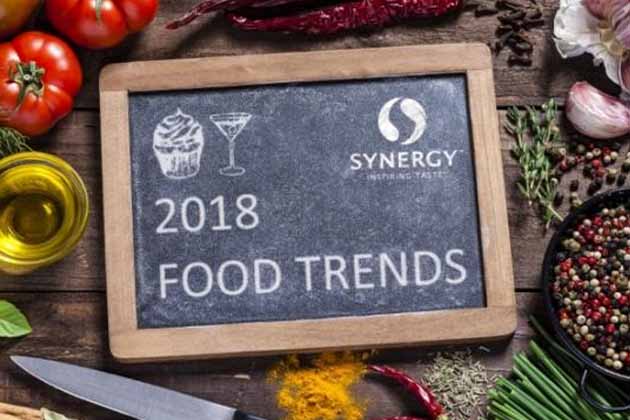
Keeping ahead of the curve in terms of food trends is critical for flavour specialists like Synergy. We help our customers to develop new products or varieties well before a flavour trend might be hitting the mainstream.
That’s why keeping our fingers on the pulse is key. By drawing insight from the market, anticipating trends through culinary expertise and keeping our ear to the ground from our global locations, customers have come to rely on our ideas and proven innovation process. So what are the key food and flavour trends we are expecting in 2018?
In 2018, millennials are growing up, becoming more influential and are generally more open to trying new things. As consumers become more adventurous, so do their food and flavour choices and the industry is adapting to a whole new age of consumer. Consumers in 2018 are well-travelled across the globe, have increasingly less time and are making food and lifestyle choices with a conscience. All of these factors make for an exciting landscape ahead for food in 2018/19, read on to find out more.
Lifting the lid on today’s hottest trends
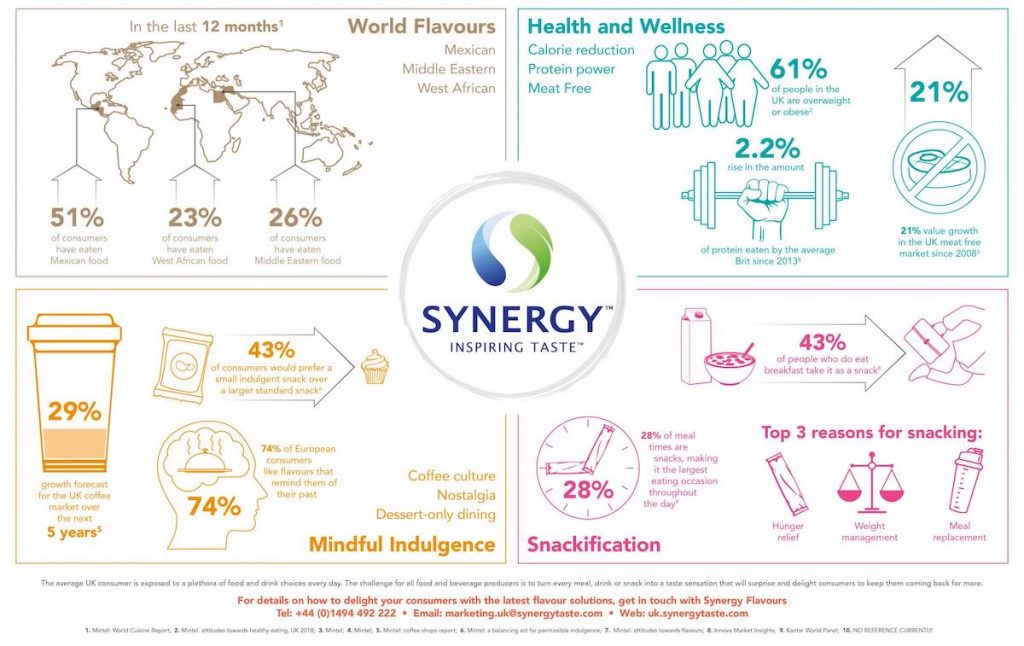
Culinary delights abound
World foods are more readily available in European cities and kitchens than ever before. Well-travelled consumers want ever more choice and authentic, regional fare.
American cuisine has been a key trend for several years and today represents the 5th most popular ready-meal type in the UK, having not even been on the top-10 as recently as 2013. As consumer tastes become more sophisticated and choice widens, regional US flavours, such as Carolina dirt rub or Kentucky black, or even specific smoking woods (such as Applewood) are gaining in popularity.
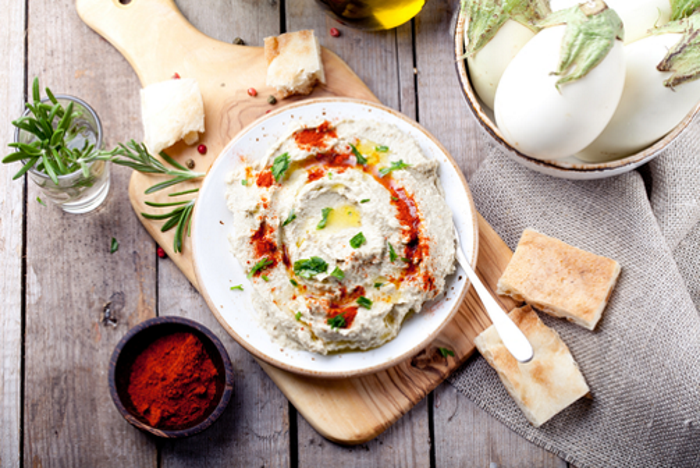
The Food People identified Middle Eastern as a trending cuisine for 2017-18. BidFood’s Food & Drink Trends 2018 guide agrees. It suggests that combining fresh traditional ingredients and spices from the Middle East and North Africa with well-known Western dishes will help to drive the trend. On the restaurant scene, London hotspots such as Ottolenghi, Honey & Co and Berber & Q are leading this trend.
We’re also starting to see renewed interest in Mexican cuisine – in 2015, we saw the number of Mexican restaurants in the UK rise by 71%. At retail level, Waitrose have found that tortilla wraps are now the second most popular bakery item in the UK (after baguettes) and Asda claim that Mexican meal kits have knocked curry off the top spot.
All this points to a new, more sophisticated attitude to Mexican food in the UK. Although Tex-Mex has been around since the 1990s, British consumers are now yearning for more regionalised offerings such as those from Mexico’s culinary heartland, Oaxaca.
Plant-based ingredients are becoming the hero in food and drink across Europe as consumers look for more natural options to fit with their lifestyle. Botanicals are a well-established flavour in the drinks industry thanks to the gin movement, but now herbs, spices, seasonal fruits and flowers are starting to spill over into other categories with all the appeal of a taste that is true to nature. As consumers become more open to new flavours we will start to see the emergence of more of these types of ingredients in unexpected places in 2018.
Health & Wellness
While the health and wellness trend pervades most aspects of the food and beverage industry, consumers are starting to care more about what can be added to their foods, rather than what’s being taken out. According to Mintel: this affirmational approach maintains the importance of formulating with the natural and often nutritional ingredients of fruits, vegetables, grains, seeds, herbs, spices, botanicals and other plant-based ingredients. This extends to the meat-free revolution, which sees more and more consumers eating vegan, vegetarian and flexitarian diets because of the potential health, ethical and environmental benefits.
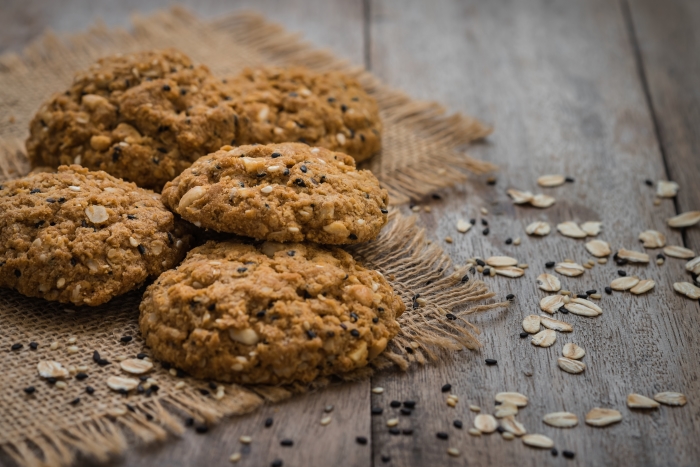
The UK’s childhood obesity plan states that ‘All sectors of the food and drinks industry are challenged to reduce overall sugar across a range of products that contribute to children’s sugar intakes by at least 20% by 2020’. High profile media campaigns such as Cancer Research UK’s ‘Sugar free February’ and TV investigations about how much sugar is in everyday products are fuelling consumer interest in the topic. In 2018, manufacturers across the top nine categories in the firing line will continue to reformulate and interest in natural sweet ingredients will grow.
Mindful Indulgence
Part of what Mintel describes as the ‘self-care’ trend, mindful indulgence sees consumers accepting the importance of balance and seeking small, permissible treats to help them live a healthy but fulfilling life. According to Mintel: self-care makes treats indispensable elements of balanced lifestyles. This view positions indulgences as more habitual and necessary rather than the rare over-the-top feast. Tapping into this trend, dessert bars are becoming more common and provide a sophisticated sweet treat for foodies, plus a different social experience to a traditional sit-down meal. In retail, portion-controlled treats are catering to this trend.
‘Snackification’ gets real
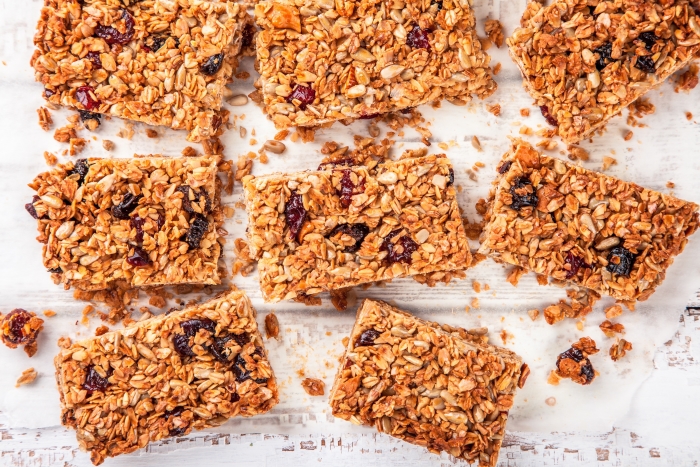
There is no denying that modern consumers need convenience and ‘on-the-go’ food and beverage products. As the health and wellness and self-care trends converge with this need for speed, diversification in the snacking market has reached unprecedented levels. While some traditionalists sniff at the modern snacking culture, eating little and often has proven health benefits. It’s no longer the case that the only healthy snack available is either fresh fruit or a cereal bar! Snack bars now offer a greater variety of ingredients, textures and indulgent experiences.
Two thirds (62-67%) of consumers in Germany, France, Italy, Spain and Poland have expressed an interest in a wider range of bars with added health benefits. Consequently, the snack bar category has seen an influx of raw, vegan and protein-rich launches over the past few years, while grain-free (paleo-style) varieties high in nuts and seeds have also started to grow. As the focus of snack bar innovation has turned to nutritional value, flavour profiles are slowly shifting from sweet to savoury.
What trends are you planning for in 2018 and beyond? To talk to our marketers or flavourists about how to anticipate the next big trend, or reformulate for any of those listed above, contact us.
insights
